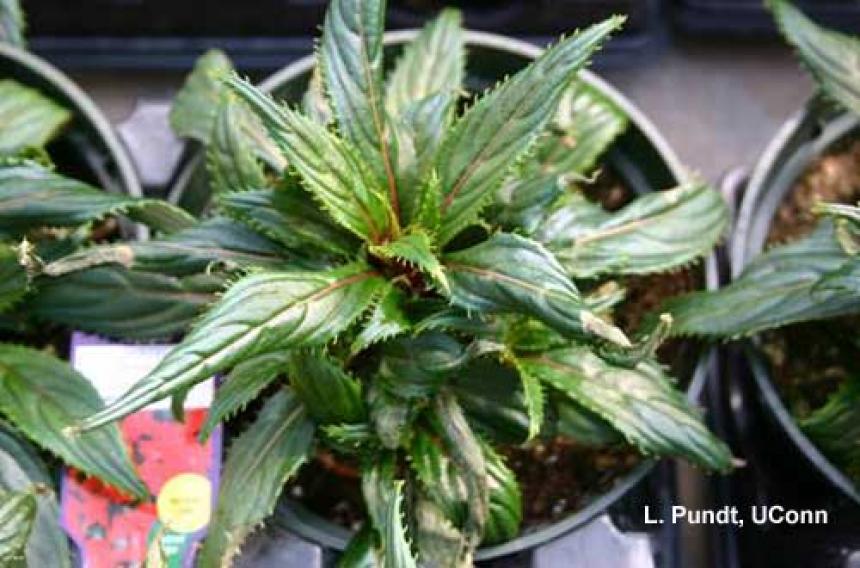Twisted growth can be caused by physiological or nutritional disorders, broad mites or ethylene.
New Guinea impatiens may exhibit twisted foliage and edge burn as a result of high soluble salts. Cupping and wavy leaves also appear to be favored by dry soil and cool moist air. These symptoms commonly show up in March and April and usually disappear as weather improves later in spring. Orange cultivars appear to be prone to this condition and have exhibited these symptoms in early spring.
These symptoms should not be confused with symptoms caused by Broad Mites, where foliage turns down and has bronzing on the petioles. Test the soil for soluble salts and bring a sample to your diagnostic laboratory for confirmation.
